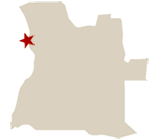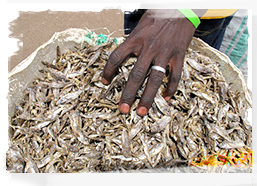An Introduction to Angola
The Khoisan hunte' gatherers followed by Bantu were the earliest know inhabitants of the area of South West Africa known as Angola. The Bantu established a number of states or kingdoms the most prominent of these being the Kingdom of the Kongo, which covered North West Angola, some of both Congos (Democratic Republic and Republic) and some of Gabon. See full country profile.Latest Research News from Africa
1 current African job:

GOVERNMENT: Republic; multiparty presidential regime
AREA: 1,246,700 sq km
POPULATION: 13,338,541 (July 2011 est.)
MAJOR LANGUAGE: Portuguese (official), Bantu and other African languages

Some business and general info
The Market Research Industry
Trade and Industry in Angola
There are still freedom fighters in Cabinda and the province is a member of the Unrepresented Nations and Peoples Organization (UNPO). FLEC can found here.
A little More Knowledge?
Go to next country
The Khoisan hunte' gatherers followed by Bantu were the earliest know inhabitants of the area of South West Africa known as Angola. The Bantu established a number of states or kingdoms the most prominent of these being the Kingdom of the Kongo, which covered North West Angola, some of both Congos (Democratic Republic and Republic) and some of Gabon.
The Portuguese were present in some - mostly coastal - points of the territory of what is now Angola from the 16th to the 19th century. In the 19th century they slowly began to establish themselves in the interior. Angola as a true Portuguese colony only dates from 1920.After independence, Angola was the scene of an intense civil war from 1975 to 2002. The country has vast mineral and petroleum reserves and now has, thanks to a series of economic reforms, one of the strongest economies on the African continent. However, it still has its share of humanitarian problems: over 4 million landmines riddle agricultural land, meaning that just 3% of land is giving any kind of yield at all. Life expectancy and infant mortality rates are both among the worst-ranked in the world.
GDP: : $107.3 billion (2010 est.) - $8,200 per capita (PPP 2010 est)
Religions Indigenous beliefs 47%, Roman Catholic 38%, Protestant 15% (1998 est.)
Currency: Kwanza (AOA) - GBP 1 = AOA 148
Telephone Code: +244
MR Association(s):
The Sadec Region (Angola, Botswana, Lesotho, Malawi, Mozambique, Namibia, Swaziland and Zambia) MR industry turned over $9m USD in 2009 - a growth of 0.7% on 2008 (The industry in the region has grown by a steady $1m USD a year since 2005 (2005 - $5m USD, 2006 $6m USD, 2007 $7m USD, 2008 $8m USD)
Source: ESOMAR
The third largest in Africa since 2005, the Angolan economy is dependent on oil - which accounts for 60% of GDP, 80% of government revenue and a huge 94% of export value. In 2009, Angola became the largest producer of crude oil in sub-Saharan Africa, overtaking Nigeria, producing 1.82m barrels a day. In 2007 Angola's growth rate was the highest in the world - peaking at 23.4% - the result of steeply rising oil production.
The country is the fourth largest producer of diamonds and other gemstones in the world, with the output growing steadily since the end of the civil war. Even though this industry has been affected by the global downturn, diamond exports represent 95% of the country's non-oil exports and 10% of non-oil GDP - exports are valued at roughly $949m.
In 2000, Angola began tentative economic reforms to solve the problems caused by decades of mismanagement, corruption and the effects of a brutal civil war. Significant progress has since been made to achieve macro-economic stability and the reduction of inflation (from over 300% in 1999 to about 11.8% by the end of 2007).
Email me:
laurence@mrweb.com

